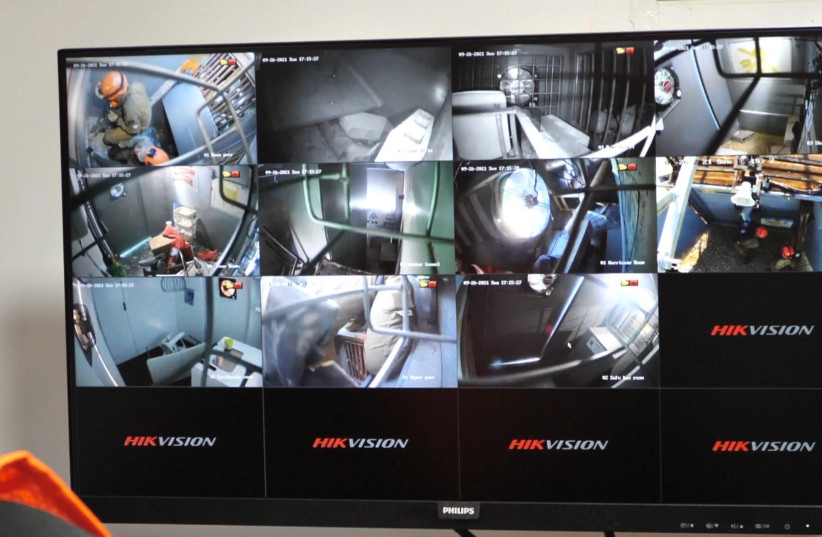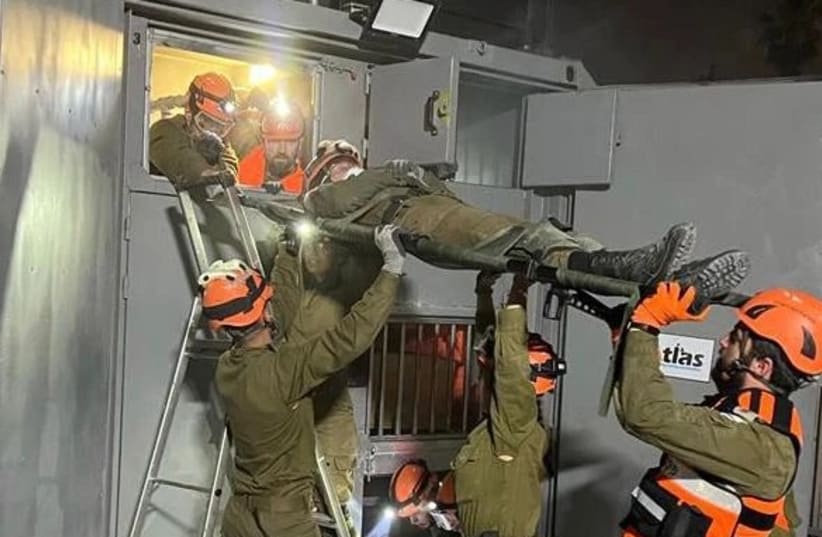The IDF’s Home Front Command is looking at ATLAS Simulator, a new mobile simulator for future search and rescue drills.
Manufactured in the southern moshav of Kfar Maimon, ATLAS (Advanced Training Learning and Simulations) Simulator has been operational in Israel for the past six months.
It’s already been used by several units, including during the military’s war month in May when troops simulated a significant attack on the Kirya Military Headquarters in Tel Aviv.
The simulator, a 40-foot-long shipping container with eight practice spaces, was built on a grant by MAFAT and the Israel Innovation Authority. It includes scenarios such as earthquakes, flooded spaces, tunnels, shafts and other challenges that rescuers might encounter.
Training is carried out in an atmosphere and environment that closely resembles reality. The angle of the simulator can also be adjusted to simulate an inclined building. There are also penetration training elements (PTEs) like iron bars, isolated panels, and other obstacles that challenge trainees.


It also has a control room with operators and instructors who can monitor the training. The footage is also recorded allowing users to be debriefed following the exercises. The training on the simulator is on average three to four hours.
Gap between what is needed and what we have
The idea for the simulator came after one of the founders, Lt.-Col. (res.) Ido Orlov realized that there was a gap between what is needed for search and rescue training and what was being offered.
The IDF Home Front Command's Search And Rescue Brigade is considered one of the best and the fastest in the world to respond to any disaster. It’s been accepted as a member of the United Nations' International Search and Rescue Advisory Group (INSARAG).
Orlov, who was a battalion commander in the Home Front Command and served as attaché of the Home Front Command in the United States, also understood that current search and rescue training is limited and can be more prone to accidents than inside a simulator.
What is being offered, ATLAS Simulators CEO Yonatan Bahat told The Jerusalem Post, is training on rubble piles.
“Those piles are not safe,” Bahat said. “When you are working there and if something goes wrong, a piece of concrete can collapse and cause damage. Usually, the training also looks the same, it’s very limiting in terms of different scenarios on the pile.”
The location of the training is also limiting for volunteers who take time from their working days to come and train. The mobility of ATLAS Simulators allows those training to take the time to practice scenarios as necessary.
And in search and rescue, timing is everything.
“Experience around the world shows that you have a very narrow window of time to find living survivors in natural disasters or rocket attacks.”
Yonatan Bahat
“Experience around the world shows that you have a very narrow window of time to find living survivors in natural disasters or rocket attacks,” Bahat said, explaining that there is a 12-24 hours window to find survivors.
“The majority of trapped people, if they weren't killed by the impact collapse, you need to get to them between 12-24 hours or else you will find their body,” he said.
Governments around the world have understood the importance of the golden hours following natural disasters and Israel trains teenagers starting in 10th grade in urban search and rescue.
And according to Bahat, those piles of rubble where training currently takes place, are not as safe as the simulator.
“When you are working there and if something goes wrong, a piece of concrete can collapse and cause damage. Usually, the training also looks the same, it’s very limiting in terms of different scenarios on the pile.”
But, Bahat said, “there is a need for first responders but there is low availability of training facilities and that’s a major issue.”
In addition to the IDF’s interest in the simulator, Bahat told the Post that the company hopes to export it abroad to the United States.
